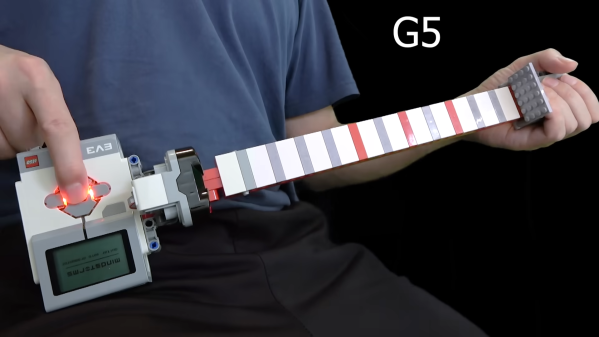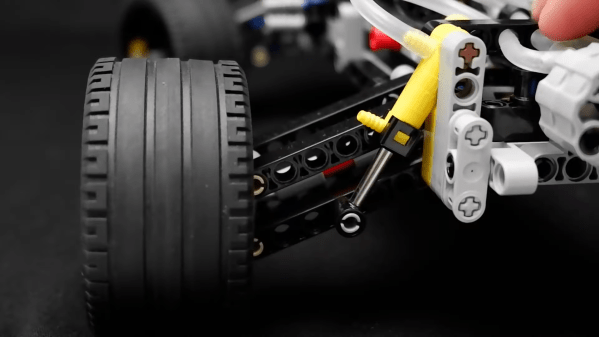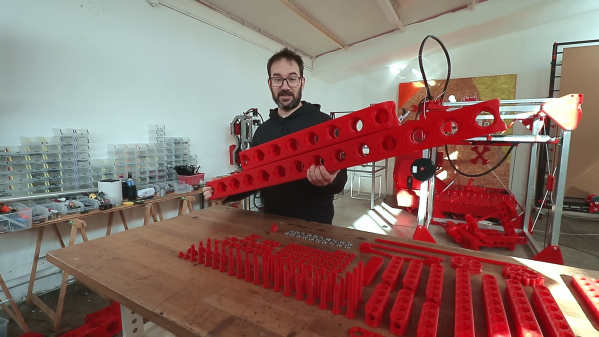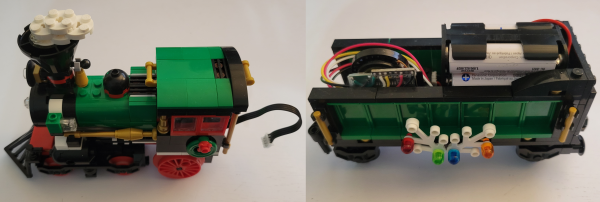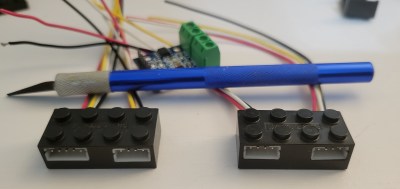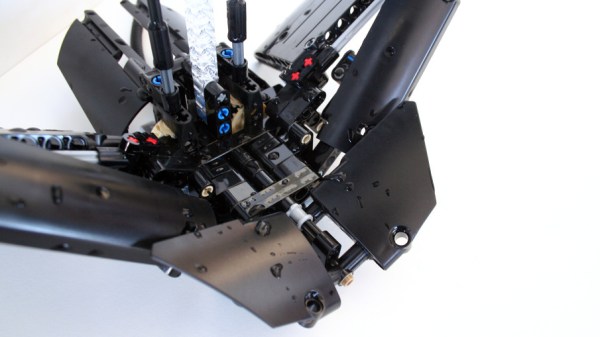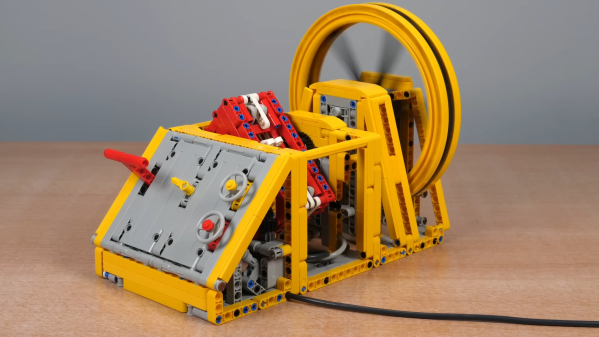The phrase “Lego Guitar” can be a stressful one to hear. You might imagine the idea of strings under tension and a subsequently exploding cloud of plastic shrapnel. This build from the [Brick Experiment Channel] eschews all that, thankfully, and is instead a digital synth that only emulates a guitar in its rough form factor.
The heart of the build is a Lego Mindstorms EV3 controller. It’s acts as the “body” of the guitar, and is fitted with a Lego “fretboard” of sorts. A slide is moved up and down the fretboard by the player. The EV3 controller detects the position of the slide via an ultrasonic sensor, and uses this to determine the fret the user is trying to play. The button the user presses on the controller then determines which of five “strings” the user is playing, and the selected note is sounded out from the EV3’s internal speaker. It’s strictly a monophonic instrument, but three different sounds are available: a bass guitar, a rock guitar, and a solo guitar, with all the fidelity and timbre of a 90s Casio keyboard.
It’s a fun and silly instrument, and also kind of difficult to play. The slide mechanism doesn’t offer much feedback, nor are the EV3 buttons intended for dynamic musical performance. Regardless, the player belts out some basic tunes to demonstrate the concept. We doubt you’d ever be able to play Through The Fire and Flames on such a limited instrument, but [Brick Experiment Channel] used their editing skills to explore what that might sound like regardless.
We’ve seen some other great synth guitars before, too. Modern microcontrollers and electronics give makers all kinds of creative ways to build electronic instruments with unique and compelling interfaces. Some are more successful than others, but they’re all fun to explore. Video after the break.
Continue reading “Lego Guitar Is Really An Ultrasonically-Controlled Synth”

